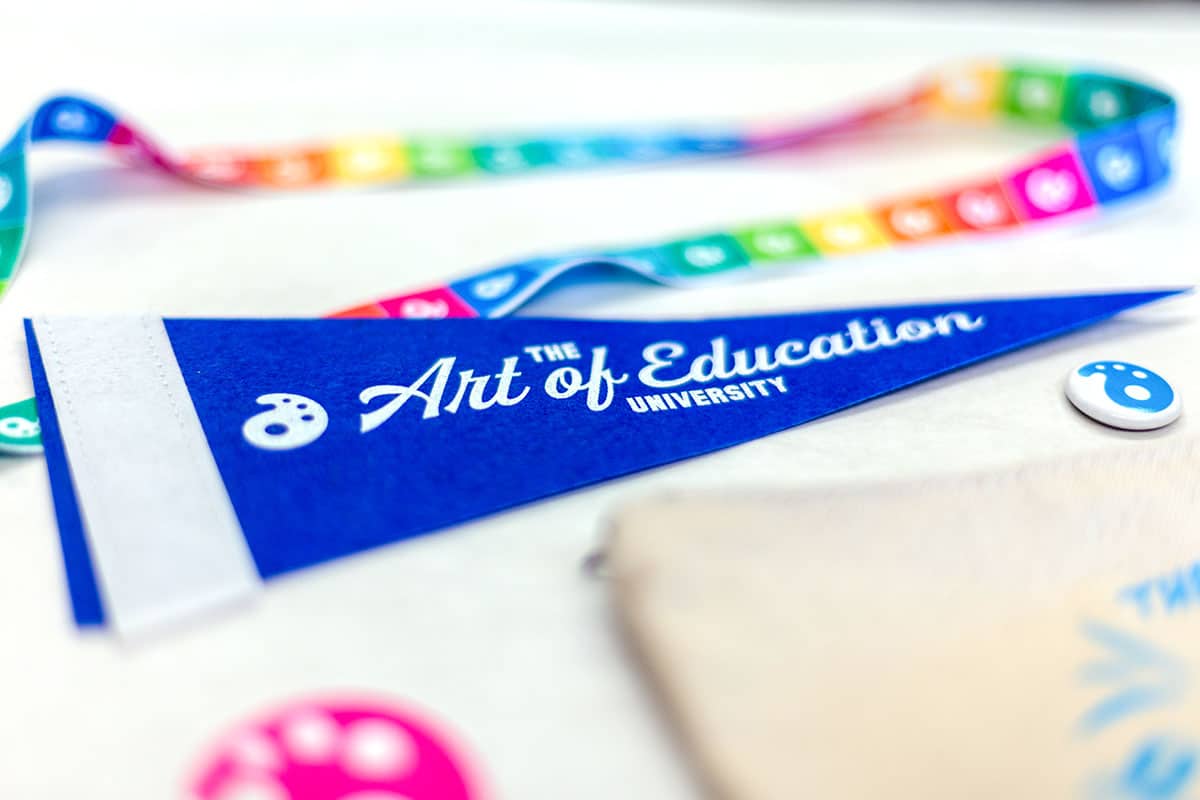One thing that makes art teachers so amazing is that we are self-proclaimed forever students who embrace learning. Continuing your education is appealing! It’s a chance to feed your brain, interact with others on the same wavelength, revitalize your teaching strategies, and grow as a researcher. It gives you a chance to challenge yourself to go further than you ever thought you could. On the other hand, it can be costly to continue learning; it can seem unattainable on a teacher’s budget. It may leave you wondering, “How can I afford a master’s degree?”
Explore five ways you can afford to pay for a master’s degree!
Let’s take a look at five practical ways you can afford to continue learning. And don’t worry—it won’t be to stop buying a cup of coffee or adding guacamole to your burrito bowl. As you read, remember that none of these suggestions live in isolation. You may be able to pair tuition reimbursement or scholarships with paying as you go to lower the cost of your degree.

1. Use district professional development funds.
Many K-12 schools have tuition reimbursement programs, so they may already cover part of your continuing education. These programs are often not widely advertised, so you’ll have to seek them out. Research your district contract, talk to your union representative, and source information from fellow colleagues. Take the time to understand exactly how the funding works in your district and what limits apply. A few key things to note are deadlines, reimbursement, and payment policies with purchase orders.
Insider Tip:
District funds go quickly! Have your paperwork polished and ready to submit before the application window opens.
2. Apply for grants and scholarships.
Money is available through school scholarships, state education programs, cultural associations, and grants. Sometimes, you can find money available through your district’s parent-teacher association or other local community organizations. No matter what options you discover, take the time to apply! Any opportunity that offsets part of your tuition is worth your energy.
Insider Tip:
Scholarship and grant applications can take time, but a tuition break is worth the extra effort to get and stay organized! Prepare your resume/CV, letters of recommendation, and references so they’re ready to go when an opportunity becomes available.

3. Leverage salary lane changes.
Research your district’s salary schedule to clearly understand how earning your master’s degree will affect your net salary over time. Some districts offer smaller pay increases for incremental steps between degrees, such as a BA +12 and BA +30 credit hours. If you time it right, you can use this increased salary to fund your degree—you won’t feel a thing because this salary increase is not part of your existing budget yet.
Insider Tip:
Pay attention to deadlines and work backward. You don’t want to miss a salary increase for an entire year by a few days. Ensure you have the credits you need beforehand from the issuing institution. Allot at least one month between the course end date and the day you need to submit official transcripts.
4. Pay out-of-pocket in small increments.
Let’s talk budgeting! Consider items you can cut out or cut back on to help you hit your monthly tuition target. Taking a detailed look at your spending will identify where every dollar goes. Then, create a process to reallocate certain buckets of money toward your tuition. At The Art of Education University, you can make small payments toward your coursework so you’ll have tuition paid in full by the start date. Remember that this is a short-term adjustment. The goal is a completed degree, a potential raise, and more financial freedom!
Insider Tip:
Cut out the extra cost of guac on your burrito bowl—just kidding! Look for windfalls, like tax refunds or a month when you get an extra paycheck. Set that money aside specifically for your degree.
5. Determine the right pace.
Pacing your coursework is one way to spread out your degree’s monthly or annual cost. Look for a program that you can tailor to meet your specific needs, compared to a strict, regimented course of learning. At The Art of Education University, take classes when it is convenient for you, your schedule, and your finances. Some students prioritize a faster pace to reach their end goal, while others spread their degree over four or five years to pay out-of-pocket as they go.
Insider Tip:
As you look at schools, ask specific questions about course pacing, course availability, and any requirements around staying on a particular timeline. Some programs require you to take courses continuously or progress with a cohort of classmates.

No matter where you are in your teaching career, the best time to invest in yourself is now.
Determining when to pursue and earn your master’s degree is personal. So many factors can determine what the “best” time is. Look at your season of life, how much time you have to dedicate, how much time you want to dedicate, and what your ultimate goal is. However, if we are talking strictly about earning potential and the return on your investment, there’s one clear answer—and I’m betting it won’t surprise you. The sooner you navigate the logistics of a master’s degree, the sooner you can increase your earning and learning potential!
Share a professional goal you have as an art teacher.
What’s holding you back from pursuing a master’s degree?
To chat about how to afford a master’s degree with other art teachers, join us in The Art of Ed Community!
Magazine articles and podcasts are opinions of professional education contributors and do not necessarily represent the position of the Art of Education University (AOEU) or its academic offerings. Contributors use terms in the way they are most often talked about in the scope of their educational experiences.
